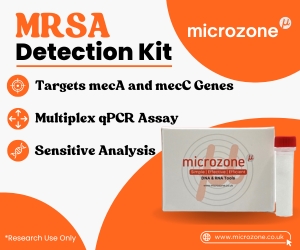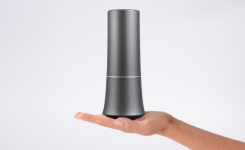Key Points
- Effective maintenance of stock cultures is essential for QC, method validation and research purposes
- Repeated subculturing may eventually lead to contamination, loss of viability and genotypic/phenotypic changes
- Freeze-drying and cryogenic storage are preferred, but may not be practical for smaller laboratories
- Cryoprotectant beads allow routine labs to maintain a stock culture collection simply and at low cost.
 One of the most important, yet often neglected, tasks in any routine microbiology laboratory is to maintain a collection of bacterial and fungal stock cultures. In a busy laboratory it is all too easy for the stock culture collection to deteriorate into a jumble of poorly labelled, partially dried-out agar slant cultures at the back of a refrigerator. But it does not have to be, nor should it be, like that.
One of the most important, yet often neglected, tasks in any routine microbiology laboratory is to maintain a collection of bacterial and fungal stock cultures. In a busy laboratory it is all too easy for the stock culture collection to deteriorate into a jumble of poorly labelled, partially dried-out agar slant cultures at the back of a refrigerator. But it does not have to be, nor should it be, like that.
There are a number of reasons why a microbiology laboratory needs stock cultures in good condition. The typical stock culture collection may contain isolates that fall into one or more of the following categories:
- Reference strains for quality control of culture media and methods
- Isolates used in the preparation of inoculated samples and specimens for quality control and training purposes
- Reference strains for the development and validation of new methods
- Pathogens and spoilage organisms lated during routine testing or in the investigation of contamination problems
- Cultures used in microbiological assays
- Isolates required for research purposes
It is difficult to conceive of a laboratory that does not need stock cultures for at least one of these reasons, even if it is simply a matter of keeping a few reference strains for QC purposes.
Methods for Establishing and Maintaining a Culture Collection
- Risk of contamination – in time, it is possible for important isolates to be completely overgrown by contaminants
- Loss of viability – if subculturing is not carried out at the required intervals and the cultures are inadequately stored, sensitive isolates may lose viability and be irrecoverable
- Continued growth at chill temperatures – some organisms, such as Listeria monocytogenes, are capable of slow growth at 0oC or even less
- Labelling mistakes – subculturing a large number of agar slants many times introduces a significant chance of a culture being wrongly labelled
- Genetic drift and mutation – every subculture carries a potential for genotypic and phenotypic changes, such as loss of virulence and resistance factors, or reduced motility, to occur
From this it is clear that unless stock cultures are scrupulously maintained they can cause serious problems in the laboratory and even a well maintained collection may give misleading results in time. In fact, the American Type Culture Collection (ATCC) recommends that no more than five passages (subcultures) should be made from the original type strain, with the first passage being defined as the culture prepared from the vial supplied by ATCC.
Alternative methods Fortunately, laboratories are not limited to the traditional agar slant stock culture these days, and there are other methods available to make the process of maintaining the collection easier and to overcome the problems described above.
Freeze-drying Also known as lyophilisation, freeze-drying is a method that can be used to suspend the metabolism of bacterial and fungal cultures and to stabilise them for long-term storage.
A thick suspension of bacterial cells or fungal spores is first prepared in a suitable suspending medium, such as 10% skim milk, or a specific lyophilisation buffer. This suspension is then dispensed into small glass vials and frozen. Once frozen, the plugged or loosely capped vials are placed in the drying chamber of a freeze dryer and dried under vacuum for 2 – 24 hours to remove water in the frozen state. A secondary drying step may also be applied by attaching the vials to the manifold of the freeze-dryer for a further 2 – 12 hours. When drying is complete the vial is sealed and then stored in the dark at 8oC or less.
Many bacterial and fungal species will remain stable and viable for at least a year under these conditions and in some cases cultures have been successfully resuscitated many years later. However, some fastidious or delicate species may be damaged by the process, or may not remain viable. For example, the cells of Campylobacter spp and moulds that produce large fragile spores require careful handling as they are very susceptible to damage and can only be stored for shorter periods.
Freeze-drying is the preferred method keeping reference strains and other isolates for long periods and is standard practice for large commercial and national culture collections. Many culture collections supply freeze-dried cultures to laboratories in glass vials, but it is also possible to obtain some QC strains in easy-to-open containers that include hydration media and an inoculating swab to simplify resuscitation and subculture.
Freeze-drying is probably not suitable for smaller laboratories that only need to maintain a small stock culture collection. As well as from the need for costly freeze-drying equipment, the process is time consuming and requires skilled staff to ensure that no contamination occurs.
Cryogenic Storage An alternative method of storing cultures under conditions that suspend metabolism is so-called cryogenic storage, usually using liquid nitrogen. Suspensions of bacterial cells or fungal spores are prepared in a cryoprotectant medium, generally containing 10-15% glycerol to minimise damage during freezing. The suspension is then dispensed into suitable containers, such as small screw-capped vials, which are then immersed in, or suspended above, liquid nitrogen.
The temperature of liquid nitrogen is -196oC, well below the temperature at which all metabolic activity is thought to cease. As with freeze-drying, not all microbial cultures will survive the process, but those that do may survive for many years. Indeed viability for some isolates may be better than for freeze-dried cultures. However, cryogenic storage is expensive, requires significant amounts of liquid nitrogen and is probably only suitable for larger reference laboratories with extensive culture collections.
Frozen storage on cryoprotectant beads Perhaps the most practical method of long term microbial stock culture storage for smaller laboratories and those engaged in routine testing is to freeze cultures onto porous beads designed to allow cells and spores to attach to their surface – providing some degree of protection against damage during freezing.
There are a number of readily available commercial products that laboratories can use to do this, but all operate in much the same way.
Outline method 1. Prepare a suspension of cells or spores of the isolate to be stored, preferably using an 18 to 24 hour old culture grown on solid medium. The colonial growth is suspended in a cryoprotectant fluid, such as Brucella Broth with Glycerol, in a cryogenic vial containing 20-30 of the porous beads.
2. The suspension is mixed by inversion and then allowed to stand at room temperature for 15-20 minutes. During this period a layer of cells will adhere to the porous beads, which have a large surface area to volume ratio.
3. The excess cryoprotectant liquid is then removed by aspiration and the vial is immediately transferred to a freezer, preferably at -70oC or less (although the beads can be kept at -20oC, they will lose viability more quickly than at lower temperatures). The cryogenic vials may be kept in aluminium ‘cryoblocs’ to help prevent rapid thawing when they are removed from the freezer.
4. To resuscitate a culture, remove a single bead quickly and use it to inoculate a solid, non-selective medium. The vial should be resealed and returned to the freezer immediately so that the remainder of the culture is not allowed to thaw.
This method allows stable stock cultures to be kept for extended periods, providing that the temperature is kept at -70oC or less. The cultures are also less vulnerable to contamination. No specialised, or expensive equipment is required and so the method is suitable for small routine laboratories. The use of porous beads also allows laboratories to make better use of freeze-dried reference cultures obtained from large collections and reduces the need for frequent replacement. Other considerations Correct labelling is a vital part of maintaining any stock culture collection. Cryogenic vials are usually designed for labelling with permanent marker pens and are also available with colour-coded tops to help laboratories identify particular categories of cultures.
Accredited laboratories will normally need to keep records of the maintenance of their stock cultures where they are used for QC and validation purposes. It may help to prepare specific documentation for this, but basic computer spreadsheets and more specialised laboratory software applications can also be used. It is important to log every subculturing of all stock cultures so that the collection can be maintained in good condition and replaced when necessary.
Outsourcing For laboratories with extensive stock culture collections, perhaps including unique strains isolated from patients, the environment, or spoiled products, it may be helpful to allow a specialist reference laboratory to help maintain the collection. Several commercial culture collections offer specialist freeze-drying services and will also store important cultures for clients. This may be vital if the integrity of the laboratory collection is compromised by an event such as a faulty freezer.
Get the latest updates in Rapid Microbiological Test Methods sent to your email? Subscribe to the free rapidmicrobiology eNewsletter





















